Q
How many cylinders in Toyota Yaris?
The Toyota Yaris comes with different engine setups depending on the market and model year. Here in Malaysia, the current third-gen Yaris (codenamed XP150) is primarily powered by a 1.5-liter naturally aspirated four-cylinder engine – either the 2NR-FE or 1NZ-FE. This engine is known for its solid reliability and good fuel economy, churning out around 107 horsepower. It pairs with either a CVT automatic or a 5-speed manual gearbox.
For Malaysian buyers, the four-cylinder layout offers better smoothness and more wallet-friendly maintenance compared to three-cylinder alternatives. Plus, the 1.5-liter displacement strikes a nice balance between usable power and manageable road tax costs – a key consideration here. Interestingly, while some overseas markets have gotten turbocharged three-cylinder Yaris variants, Malaysia has stuck with the tried-and-tested four-cylinder to cater to local drivers' preference for dependability.
If you need to double-check the cylinder count for a specific Yaris, your best bets are checking the metal plate under the hood or looking up the specs on Toyota Malaysia's official website. Minor tweaks to engine tuning might happen with facelifts over the years, but the core four-cylinder architecture usually stays the same.
Special Disclaimer: This content is published by users and does not represent the views or position of PCauto.
Related Q&A
Q
What kind of engine is in the Toyota Yaris 2023?
Toyota's 2023 Yaris hits Malaysian roads with two engine choices to suit different drivers. There's the tried-and-tested 1.5L four-cylinder naturally aspirated unit (codename 1NZ-FE), paired with a conventional 4-speed automatic transmission. Then you've got the more advanced 1.5L three-cylinder Dynamic Force engine (M15A-FKS), which comes mated to Toyota's snappy Direct Shift-CVT for a nice blend of pep and fuel efficiency.
What really stands out about the Dynamic Force mill is Toyota's latest tech: it uses D-4S dual-injection and a high compression ratio to push out 106 hp and 140 Nm of torque. More importantly, it's tuned for better combustion efficiency, meaning it sips less fuel – perfect for Malaysia's stop-start city traffic. If you like a bit more fun behind the wheel, the 1.5L three-cylinder variant even throws in a Sport driving mode. On the flip side, the naturally aspirated four-cylinder wins points for being easy on maintenance costs.
Both engines play by Malaysia's emission rules and stay true to Toyota's reputation for bulletproof reliability. So, local buyers basically have two solid paths: go for the three-cylinder if you want the latest tech, or stick with the four-cylinder if you value tried-and-true simplicity. Your call depends on your budget and what you prioritize most.
Q
What is the eco mode on a Toyota Yaris 2024?
The 2024 Toyota Yaris' ECO mode is a fuel-saving driving aid that cuts down on gas use by tweaking engine output and transmission shift patterns. It's perfect for Malaysia's stop-and-go city traffic. Flip it on, and a green ECO light pops up on the dashboard to let you know you're in efficiency mode. The AC system also dials itself back to a more economical setting automatically. Sure, it takes a tiny bit of edge off the throttle response, but the payoff is better fuel economy – we're talking about saving roughly 10-15% on gas over time.
One thing to keep in mind: when you need to make a quick overtake or climb a steep hill, just switch ECO mode off for that instant power kick. Now, other car brands do have similar fuel-saving tech, but each one tunes it a little differently. Toyota's ECO mode here is specially optimized for Southeast Asia's hot and tropical weather, striking a good balance between AC performance and saving fuel. It's a nice touch that shows Toyota really thinks about the specific needs of different regions.
Q
What is the update for the Toyota Yaris in 2024?
The 2024 Toyota Yaris has landed in Malaysia with a bunch of upgrades, focusing mainly on sprucing up its looks, tech features, and powertrain. The new Yaris rocks sharper LED headlamps and a redesigned front bumper, giving it a sportier overall stance. Inside, there's a larger touchscreen that now supports wireless Apple CarPlay and Android Auto, making the whole connectivity experience way smoother. Under the hood, it sticks with the tried-and-tested 1.5-liter Dual VVT-i engine paired with a CVT gearbox, but with some tweaks to boost fuel efficiency—perfect for Malaysia's city driving. Safety-wise, every trim gets the Toyota Safety Sense suite as standard, packing handy features like pre-collision system and lane departure alert.
It's worth noting that the Southeast Asian market Yaris isn't the same as the European version. Toyota's tweaked the suspension setup and equipment packages to suit local road conditions and what Malaysian buyers actually want. That's pretty standard for global automakers, right? They tailor stuff to different markets to better meet local needs. For Malaysian shoppers eyeing a small hatchback, the Yaris' solid reputation for reliability and Toyota's strong after-sales network are still big draws. And with these 2024 updates, it just got even more competitive in the segment.
Q
How many cylinders are in the 2024 Toyota Yaris?
The 2024 Toyota Yaris hits the Malaysian market with two powertrain options. The 1.5-liter naturally aspirated engine features a 4-cylinder (inline-four) setup, while the 1.5-liter hybrid variant pairs a 3-cylinder engine with an electric motor. This compact hatchback stays true to Toyota's reputation for affordability and practicality. The four-cylinder version caters to those who value smoothness and dependability, whereas the three-cylinder hybrid is better suited for fuel-efficiency seekers.
In Malaysia, the Yaris has struck a chord with young drivers and small families, thanks to its nimble handling and Toyota's extensive after-sales service network. It's worth highlighting that the three-cylinder engine has effectively mitigated the traditional issue of significant vibrations through technologies like a balance shaft. Additionally, the hybrid system delivers impressive fuel savings, which is a big plus given Malaysia's relatively high fuel prices.
No matter which powertrain you choose, the 2024 Yaris comes standard with Toyota Safety Sense, Toyota's active safety suite that includes pre-collision warning and lane-keeping assist. This gives it a competitive edge in its segment.
Q
How to open gas tank Toyota Yaris 2024?
Popping open the fuel cap on the 2024 Toyota Yaris is a breeze. When the car's unlocked, just give the right side of the fuel door (located on the rear right flank of the vehicle) a light push, and it'll spring open. No extra steps or fiddling with interior levers – it's one of those handy little refinements Toyota's been rolling out lately to make life easier.
Now, here's the thing to watch for: some Malaysian-market versions might come with a locking fuel cap. If a gentle press doesn't do the trick, head over to the driver's seat, check the left-side control panel for a fuel door release switch (it's got the gas pump icon), and give that a try. You'll usually find this setup on the higher-spec trims. If you're ever stuck the first time, it's always a good idea to flip through the owner's manual – specs can vary a bit from one market to another.
For other Toyota models like the Vios or Corolla, the fuel cap operation is pretty similar, though some older models might still stick with the traditional interior pull lever.
And hey, living in Malaysia with its hot and rainy weather can take a toll on rubber seals over time. It's worth making a habit of checking that fuel cap seal every now and then to keep rainwater and dust from getting into the fuel system. If you notice the cap isn't closing properly or starts making weird noises, swing by an authorized service center. It's usually a quick fix and won't cost you an arm and a leg.
Q
How many seats are in the Toyota Yaris 2024?
The 2024 Toyota Yaris hits Malaysian roads as a practical 5-seater, sticking with the tried-and-true 2+3 seating layout that's perfect for everyday family duty. The seats themselves are designed to balance comfort with space efficiency, making this little hatch a solid pick for city commutes and small families alike.
What's worth noting is that as a key player in Toyota's global lineup, the 2024 Yaris offers Malaysian buyers a choice between a 1.5L petrol engine and a hybrid powertrain. Clocking in at around 4 meters long, it's firmly in the B-segment hatchback category. Now, rear legroom is on the snug side, but Toyota has tweaked the seatback angle and cushion design to make the back seats more livable.
Rivals like the Honda Jazz and Mazda 2 also offer 5 seats, but the Yaris fights back with the inherent advantages of the TNGA platform – think a lower center of gravity and sharper, more agile handling. Plus, the 2024 update brings some nice touches for rear passengers, including added USB ports and storage cubbies, which are always handy.
If you're a Malaysian buyer needing more seats, Toyota's got you covered with options like the 7-seater Rush or the 8-seater Innova MPV. But for many, the Yaris' fuel-sipping nature and compact dimensions that make parking a breeze keep it a top choice in traffic-congested cities like Kuala Lumpur.
Q
How to set cruise control on Toyota Yaris 2024?
Setting the cruise control in the 2024 Toyota Yaris is a breeze. First, make sure you're rolling at over 40km/h, then hit the "CRUISE" main switch on the right side of the steering wheel – you'll see a white cruise indicator pop up on the dash. Next, accelerate to your desired speed, say 110km/h like you'd typically use on the highway, and flick the "SET-" lever down to lock it in. The light turns green when it's active and good to go. Need a little speed adjustment? Use the "+" or "-" lever to nudge it up or down in 1.6km/h increments. Tap the brakes or hit "CANCEL" to pause it temporarily, but you'll need to press the main "CRUISE" switch again to shut it off completely.
A quick heads-up for Malaysian drivers: it's smarter to stick to manual driving in rainy or foggy conditions, or on KL's busy roads. Remember, this is basic cruise control – it won't automatically detect obstacles ahead, so no full-speed adaptive magic here. The Honda City and Nissan Almera in the same class offer similar features, though their controls are laid out a bit differently, so it's worth flipping through the owner's manual to get the details right. And don't skip regular brake checks – they're key for safe cruise use. That said, on long hauls up and down the North-South Expressway, this feature really helps take the edge off driver fatigue.
Q
What is the hold button on a Toyota Yaris 2024?
The "Hold" button on the 2024 Toyota Yaris is a handy driving assist feature, especially useful for Malaysia's hilly terrain and stop-start traffic. When you've come to a complete halt – say, at a red light or in a traffic jam – a quick press of this button lets you take your foot off the brake pedal. The car's electronic system then takes over, automatically holding the brakes to prevent any rolling, and only releases when you hit the accelerator again. It's a real leg-saver, trust me, especially during those long waits.
You'll typically find this kind of feature on cars with electronic parking brakes. How does it work? Basically, the electronic control unit steps in to do the job that a traditional handbrake would. Now, important to note: this isn't the same as Hill-Start Assist Control (HAC). HAC is that brief helper when you're pulling away on a slope, stopping you from rolling back. The "Hold" function, on the other hand, actively keeps the car stationary once you've stopped.
This little gem really shines during those scorching Malaysian afternoons when you're stuck at a long traffic light. My advice? Familiarize yourself with where the button is, and give the owner's manual a quick read to get the lowdown on exactly how it operates. Different car brands might call it something else, but the core idea is pretty much the same.
Q
How to change Toyota Yaris to kmh 2024?
To switch the instrument cluster display units on the 2024 Toyota Yaris from mph (miles per hour) to km/h (kilometers per hour), you'll typically use the settings buttons on the dashboard or the vehicle information display. The exact steps might vary slightly depending on the trim level and configuration. First, start the vehicle, then look for the "DISP" or "SET" button – it's usually on the left side of the steering wheel or near the instrument cluster. Press that to enter the settings menu, navigate to the "Units" option, and select "km/h" to finalize the change.
If you run into trouble, don't guess – check your owner's manual or swing by a Toyota authorized service center. They'll get you sorted quickly. In Malaysia, km/h is the standard speed unit, same as most Commonwealth countries. Getting this setting right isn't just about convenience; it helps you stay within speed limits and avoids any mix-up-related tickets.
The Yaris has always been known for its user-friendly, straightforward controls, but let's be real – even small details can differ between model years and specs. Taking a few minutes to familiarize yourself with your specific Yaris's setup? Totally worth it for smooth, stress-free driving.
Q
How to open Yaris 2024 trunk?
There are several simple ways to open the trunk of the 2024 Toyota Yaris. The most direct way is to use the trunk release button on your remote key fob. Just press and hold it for about a second, and it will unlock automatically. There is usually a trunk release lever on the driver’s side door panel inside the car, which is very convenient for quick access when you’re parked. If you’ve got a higher - spec model with the smart induction feature, you can simply approach the trunk with your key in your pocket or bag and press the button on the tailgate to unlock it. It is worth noting in terms of safety that the 2024 Yaris has an effective security upgrade that ensures the trunk can only be opened when the vehicle is unlocked, which helps keep your valuables safe from theft. For our Malaysian friends, the hot and humid weather here can sometimes affect the sensitivity of electronic components. So, it’s a good idea to check your key fob battery regularly and keep the trunk’s mechanical lock hole lubricated. These simple maintenance tips can greatly extend the service life of the relevant components. If you ever encounter a situation where the trunk won’t open, refer to your owner’s manual for the emergency mechanical release steps, or reach out to your nearest authorized Toyota Malaysia service center. They will provide you with professional assistance.
Latest Q&A
Q
How long is the lifespan of i4?
As a pure electric vehicle, the lifespan of the BMW i4 hinges largely on battery longevity, regular maintenance, and driving habits. Generally speaking, modern EV batteries can last anywhere from 8 to 15 years under normal usage and proper care, with the exact duration depending on how often you charge and the ambient temperature. BMW backs the i4's battery with an 8-year or 160,000-kilometer warranty, ensuring it retains at least 70% of its capacity during that period. For Malaysian users, the hot climate might have a slight impact on battery life, but BMW's battery thermal management system does a solid job of mitigating that issue. What's more, EVs have a simpler mechanical setup than traditional gas-powered cars, eliminating the wear and tear issues associated with engines and transmissions. That translates to relatively strong long-term reliability for the i4. To maximize its lifespan, it's advisable to avoid frequent fast charging, try to keep the battery level between 20% and 80%, and stick to the official recommended maintenance schedule. With EV technology evolving so rapidly, future advancements in battery tech could very well push EV lifespans even further.
Q
What is the maintenance cost of an i4?
The BMW i4, as a pure electric vehicle, offers more economical maintenance costs compared to traditional internal combustion engine cars. This is largely thanks to the simplified structure of its electric powertrain, which eliminates the need for regular replacements like engine oil and filters. Here in Malaysia, the periodic service cost for a BMW i4 typically ranges from around RM800 to RM1,500 per visit. The exact figure depends on the service center's pricing and the specific checks involved, such as battery health diagnostics, brake fluid replacement, or cabin air filter maintenance.
Service intervals for EVs are generally longer too – usually every 20,000 kilometers or once a year – which further reduces the long-term ownership costs compared to petrol or diesel cars. Additionally, BMW Malaysia often rolls out service package plans, allowing you to lock in prices upfront and shield yourself from inflationary pressures down the line.
One thing to keep in mind though is that EV tires can wear a bit faster, mainly due to the instant torque delivery. So, it's a good idea to check your tire condition regularly; it not only helps with longevity but also optimizes your range. For Malaysian owners, climate is another consideration. Frequent air-conditioning use can put a slight extra load on the battery, but BMW's battery thermal management system is pretty effective at handling our hot weather conditions.
If you're after a super precise budget, your best bet is to reach out to your local authorized BMW dealership for the latest service quotes.
Q
Is the i4 fast?
Yeah, the BMW i4 is definitely a solid performer in the electric car game, especially when it comes to acceleration. Take the i4 M50, for example. It's packing a dual-motor all-wheel-drive setup that cranks out a whopping 544 horsepower. That translates to a 0-100km/h sprint in around 3.9 seconds – that's pretty much knocking on the door of traditional high-performance gas-powered cars. For Malaysian drivers who want something sprightly for daily use or the occasional need for speed, this thing has more than enough grunt. What's really nice is how electric motors deliver instant torque, so the i4 just leaps off the line right from the get-go. That's a big plus when you're looking to overtake on Malaysia's city streets or highways. If you're craving even more performance, there are other i4 variants too, offering different power levels to match various budgets. On top of that, being a fully electric model, the i4 qualifies for some EV perks in Malaysia, like road tax exemptions – that's definitely something to factor into your decision. Just keep in mind, though, that an EV's performance can be influenced by things like battery charge level, so it's a good idea to really put it through its paces during a test drive to get a feel for how it handles in different situations.
Q
Is the BMW i4 100% electric?
Yep, the BMW i4 is a 100% electric ride, part of BMW's i lineup of new energy vehicles. It's packing the fifth-gen eDrive tech, running purely on battery power—no gas needed. Perfect for Malaysian drivers who want that eco-friendly edge without skimping on performance.
You've got two flavors to pick from: the eDrive40 and the M50. Range-wise, the eDrive40 can go about 590 km on a single charge under WLTP specs, while the M50 still holds its own at around 510 km. And when it comes to juicing up, fast charging is a breeze—10 minutes plugged in gets you roughly 164 km more range. Whether it's your daily commute or a longer road trip, this thing's got you covered.
Electric cars are really starting to take off in Malaysia, and the government's tax incentives are making them more appealing than ever. The i4 stands out in this crowd, blending BMW's premium badge with cutting-edge tech like that curved display and advanced driver assists. Plus, it drives just as well as you'd expect from a BMW—no compromises there.
If you're thinking about going electric, though, there are a few things to keep in mind. Check out the charging infrastructure where you live and see if home charging is feasible. And don't forget to cross-shop with rivals like the Tesla Model 3 or Mercedes EQE to make sure you're getting the best fit for your budget and needs.
Q
Is the BMW i4 selling well?
As BMW's first all-electric four-door coupe, the i4 is performing right in line with expectations amid Malaysia's shift toward electrification. It's really struck a chord with discerning high-end buyers who want both performance and eco-friendliness. The fifth-gen eDrive tech under the skin delivers up to 590 km of WLTP range in the eDrive40 variant, and when paired with BMW's signature handling tuning, it does a great job bridging the gap for traditional combustion engine drivers making the switch to electric.
Malaysia's government incentives like tax exemptions have given the i4 an extra edge in competitiveness. While the local charging infrastructure is still a work in progress, BMW's partnered charging network helps ease range anxiety pretty effectively. What sets the i4 apart from its rivals is how it keeps that quintessential BMW sporty character while going zero-emission – plus, the locally-assembled (CKD) versions make it more accessible price-wise.
To be fair, EVs still haven't caught up to traditional cars in terms of market penetration here, so overall sales can't compare to petrol/diesel models. But in the luxury electric segment, the i4 is holding steady with growth. If you're considering an EV, I'd recommend test-driving the i4 to feel its acceleration and check out the smart cabin. Also, compare the charging packages different brands offer. Right now, EV choices in Malaysia are still limited, but the i4's well-rounded package makes it one of the top contenders in its price bracket.
View MoreRelated News
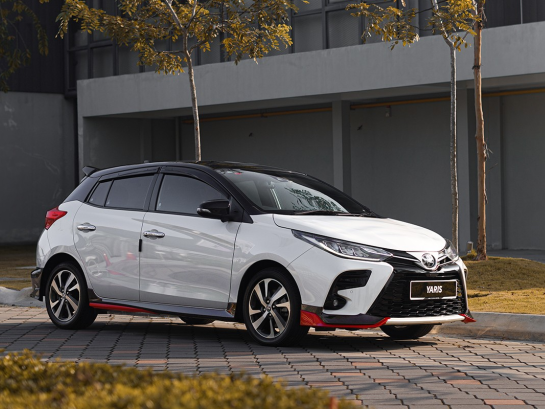
Toyota Yaris Interior Design Revealed: The Ideal Choice for Daily Commutes
AshleyJul 17, 2025
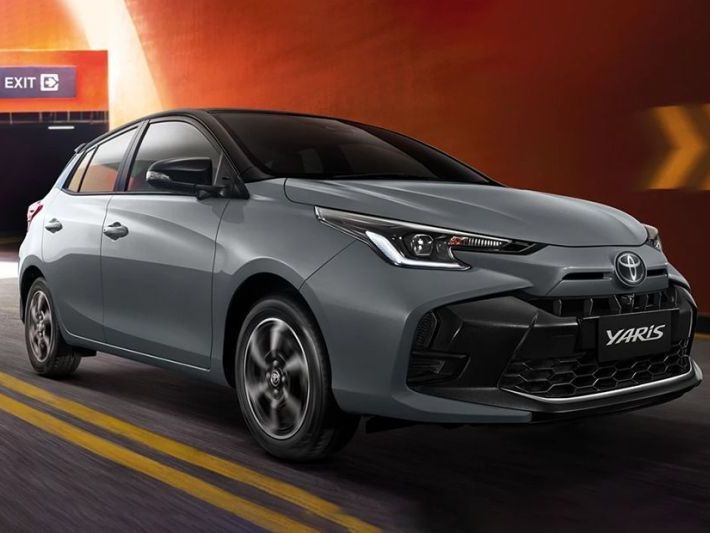
Highlights of the Toyota Yaris: The Perfect Fusion of Outstanding Power and Comfortable Handling
MichaelApr 16, 2025
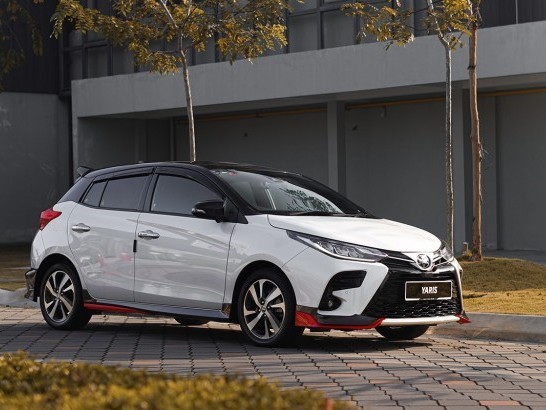
Is my Yaris fuel consumption normal? What should the fuel consumption per 100km be?
MichaelFeb 28, 2025

Toyota takes the crown at the second stop of the 2025 WRC, the GR Yaris helps Toyota take the top of the points table
JamesFeb 19, 2025
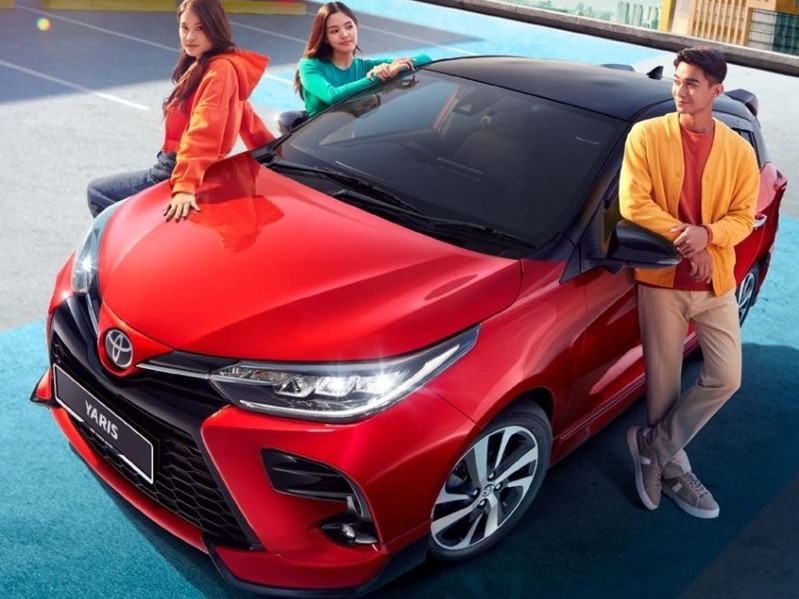
Starting from RM 88,000! The favorite of office workers, Toyota Yaris meets all your needs!
LienSep 4, 2024
View More



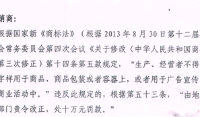








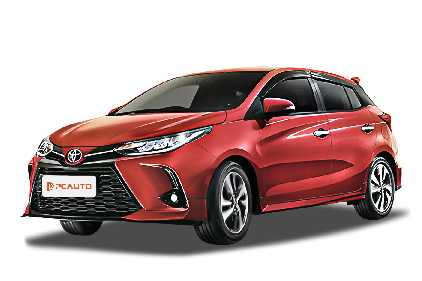





Pros
Cons